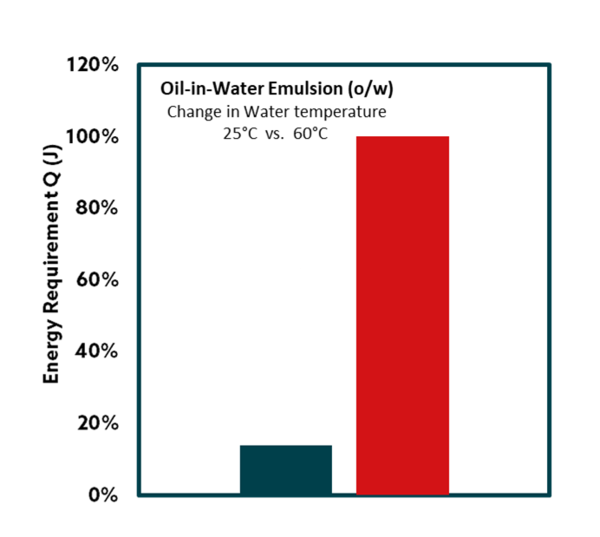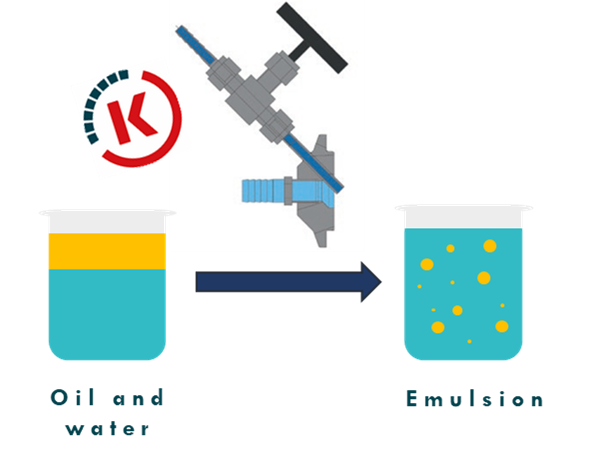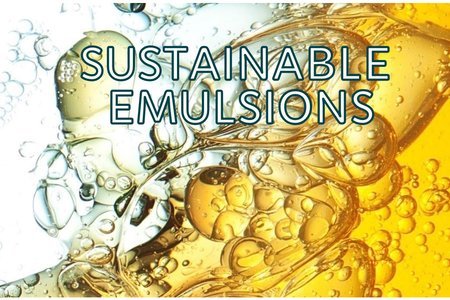Sustainable Emulsions
Application purpose
To reduce the energy consumption in emulsification processes
Challenges
- Control of temperature increases
- Process and product quality and stability over time

How did we achieve it?
Sustainability is nowadays one of the most important and trending topics but also a difficult one to address. In the food industry, for example, one of the factors to consider a food system a sustainable one is that the processes involved require minimal inputs, raw materials, water and energy 2. This concept is aligned not only with the Sustainable Development Goal (SDG) 9 (Industry, innovation and infrastructure) and 12 (Responsible consumption and production) but also with what Kinematica technology can offer.

Reduction in energy requirement by reducing water temperature
One way to reduce the energy consumption is through the usage of innovative technologies that allows reducing process temperature (or eliminating the need of heating) 3,4 and/or time. In a milk industry real case, for example, reducing the pasteurization temperature by 2°C helped the overall process to reduce energy costs by 19%. 5
Sustainability Development Goals (SDG)1
Did you know ...
By 2030, upgrade infrastructure and retrofit industries to make them sustainable, with increased resource-use efficiency and greater adoption of clean and environmentally sound technologies and industrial processes, with all countries taking action in accordance with their respective capabilities is one of the goal targets of the Goal 9: Industry, innovation and infrastructure
By 2030, achieve the sustainable management and efficient use of natural resources is one of the goal targets of the Goal 12: Responsible consumption and production
The Kinematica Solution
MEGATRON® MT-V and REACTRON® with injector is Kinematica’s solution to ensure an efficient emulsification. The dispersion into the turbulent zone of the rotor stator using the injector, allows an efficient dispersion using cold water, without quality loss. This change implies a reduction up to 90% on the energy demand!

Would you like to know more? Contact us here or send an email to science@kinematica.ch.
1 Sustainable development goals: United Nations Development Programme. UNDP. (n.d.). Retrieved March 10, 2022, from https://www.undp.org/sustainable-development-goals
2 Baldwin C., Wilberforce N. T. (2009); Chapter 11 - Sustainability Principles and Sustainable Innovation for Food Products; In: Sustainability in the Food Industry Edited by Cheryl Baldwin © 2009 Wiley-Blackwell and the Institute of Food Technologists; 239-249
3 Moejes, S. N., and A. J. B. van Boxtel. “Energy Saving Potential of Emerging Technologies in Milk Powder Production.” Trends in Food Science & Technology, vol. 60, Feb. 2017, pp. 31–42, https://doi.org/10.1016/j.tifs.2016.10.023.
4 Roohinejad, Shahin, et al. “Energy Saving Food Processing.” Sustainable Food Systems from Agriculture to Industry, Elsevier, 2018, pp. 191–243, https://doi.org/10.1016/B978-0-12-811935-8.00006-8.
5 M. Janzekovic, B. Mursec, P. Vindis, F. Cus, Energy saving in milk processing, Journal of Achievements in Materials and Manufacturing Engineering 33/2 (2009) 197-203.

